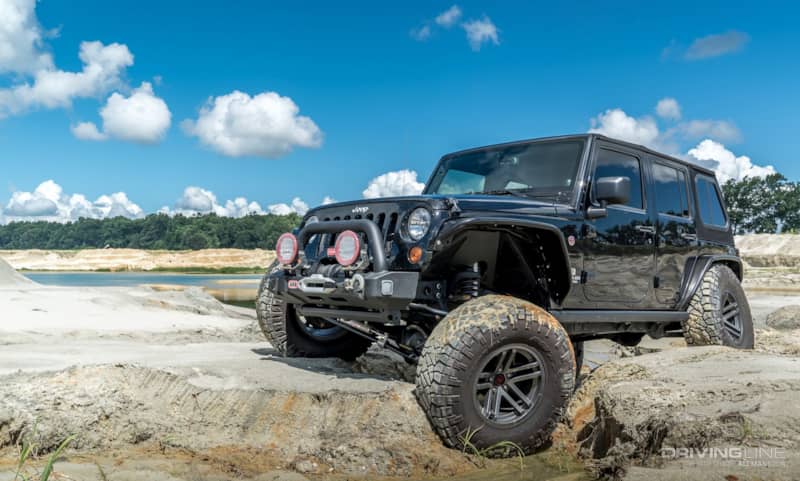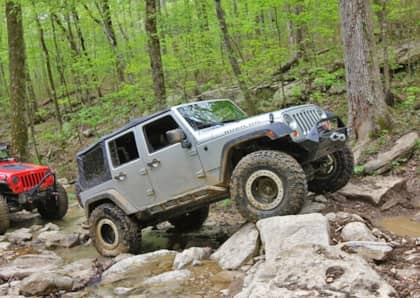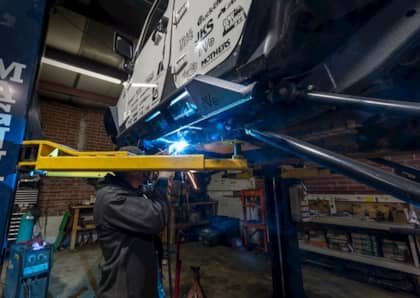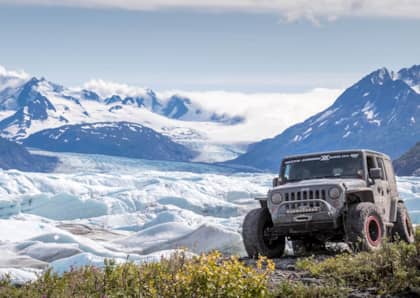Dropping Heat and Adding Flare: EVO MFG JK Inner Fender Review
Aside from solid axles, the best feature on the Jeep Wrangler JK arguably is the large wheelwells. These massive openings allow those looking to modify their JK with the ability to shoehorn on taller treads, without the need of adding on extreme amounts of lift. A lower lift height ultimately equates to a lower center of gravity, which translates to a safer Jeep with better handling characteristics both on-road and off. This low-lift, big-tire philosophy is something we’ve stayed true to with our 2013 Jeep Wrangler Unlimited Rubicon.
As the build has progressed, so has the tire size. Since we didn’t want to increase the lift from our current 2.5-inch setup, we installed a set of fender flares from EVO Manufacturing. These allowed us to easily clear our 37x12.50R17 Nitto Ridge Grapplers. While we love the coverage and room the EVO flares offer, when we made the jump to the new steel fenders, we ditched our stock inner fender liners. This left our engine bay sides open. Though this has been great for heat expulsion, it isn’t ideal for component protection.
So we finally did something about it with a set of aluminum fenders liners from EVO Mfg.
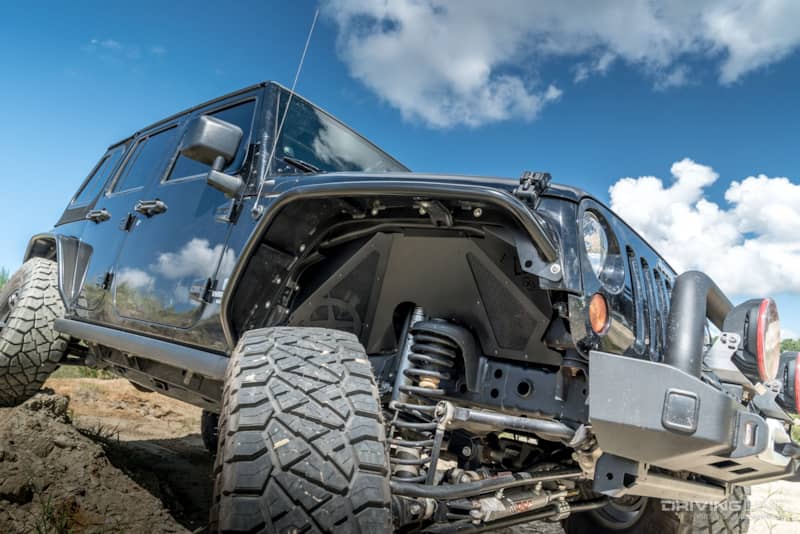
Added Protection
EVO offers the inner fenders for an assortment of suspension options. Since our JK was still running the standard coil-and-shock configuration, we got the EVO-1197 set. These are a vented fender assembly comprised of 16-gauge 5052 aluminum. While you’ll need to bolt them together, assembly only takes a few minutes per side.
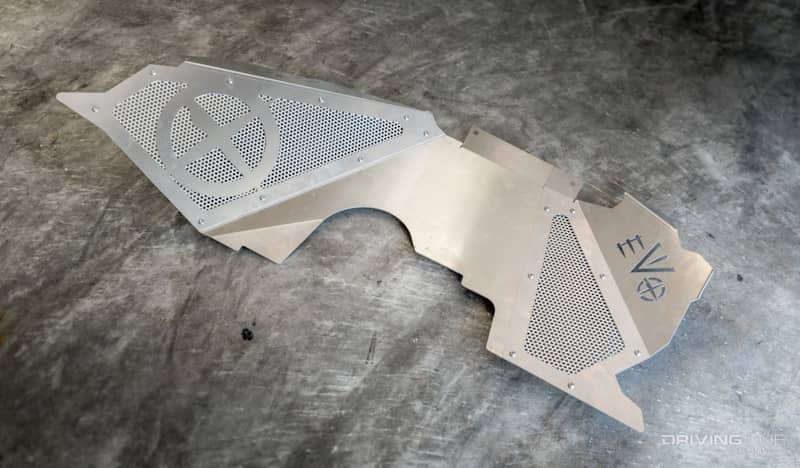
Our original inner fenders left a long time ago, leaving a host of wiring and engine bay components exposed. Our biggest worry has always been the wiring and connectors on the passenger-side inner fender. It’s worth noting that EVO actually offers a smaller set of mini-fender liners for those looking to cover just this area.
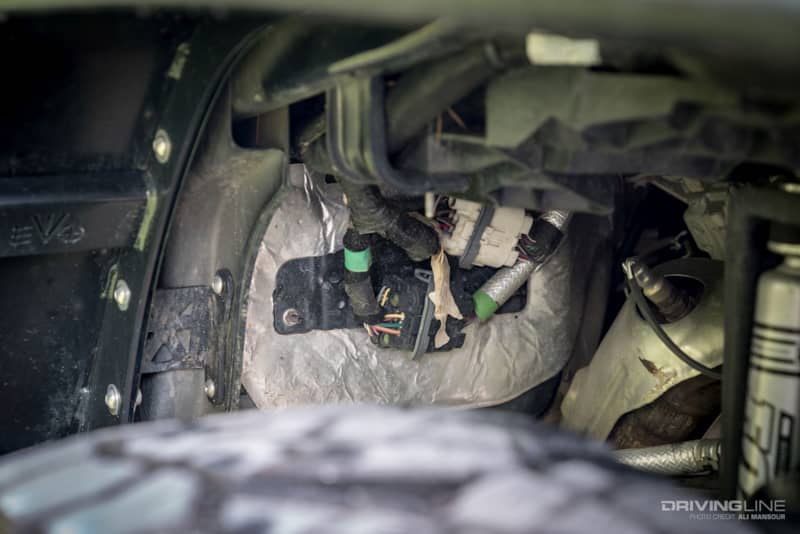
Installation
The EVO liners are designed to work with stock and aftermarket flares. Our EVO fender-flare braces needed to be removed from each side so the liners could be placed behind them. Once we did a test fit, we marked the spot that the bracket overlapped with a paint marker. Then, we removed the liner and drilled a hole for the fender brace bolt to pass through.
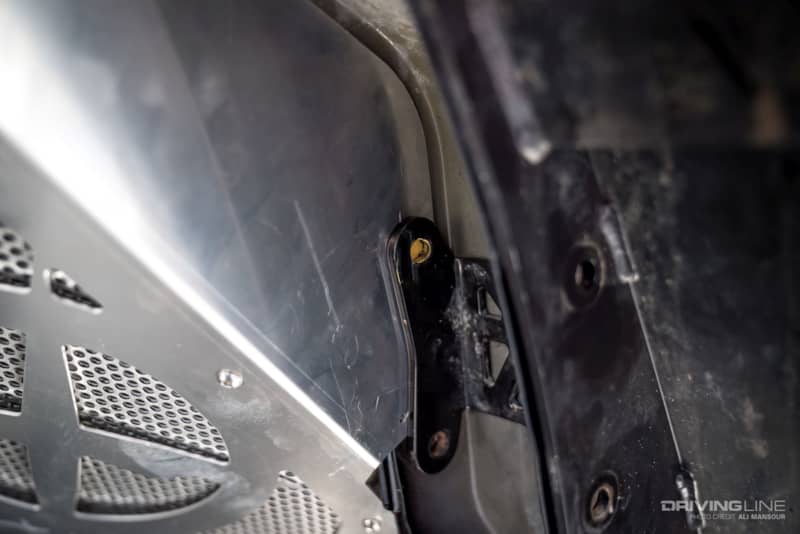
The two forward panels attach using existing nut inserts in the JK’s fender brace. Our OE hardware was long gone, so we picked up a set of M6x1.00 bolts from our local hardware store.
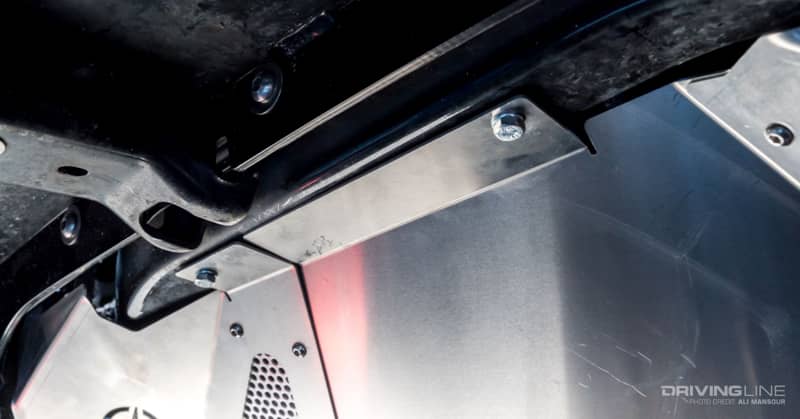
The front portion of the liner is secured by a through-bolt in an existing hole in body of the JK. At this point, our fender install was complete.
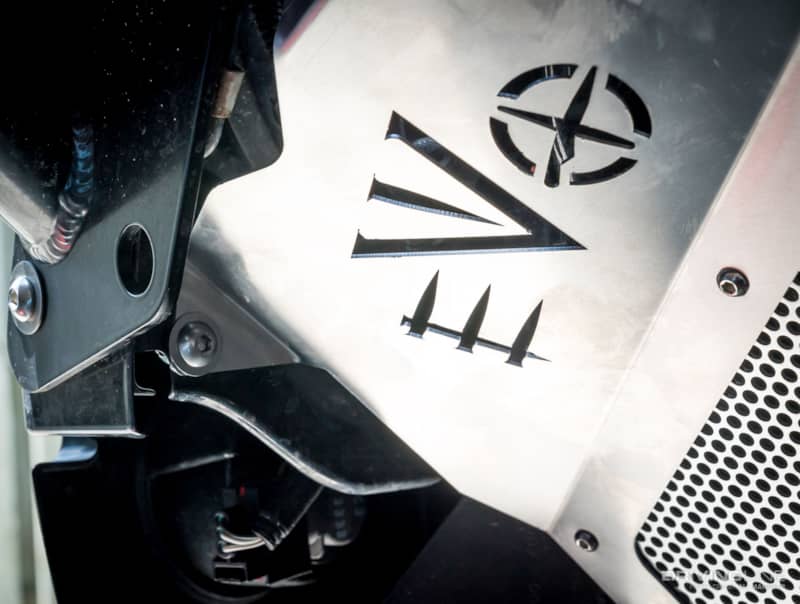
How They Look
We liked how the bare aluminum looked under the Jeep, but ultimately decided a fresh coat of Krylon Flat Black paint was going to make for easier upkeep. Since the vented sections can be unbolted, you could easily hit those with a different shade of paint if you were trying to add an accent color.
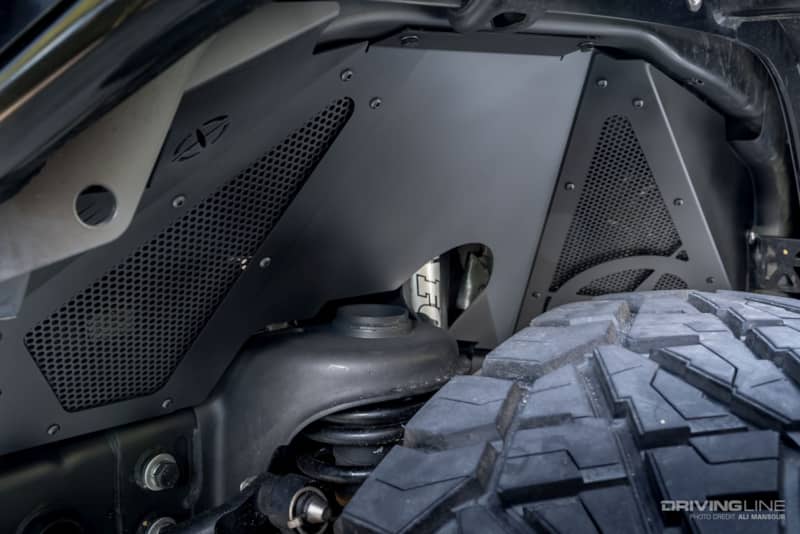
How They Perform
Our Jeep is bumpstoped appropriately, but given we had not run this setup with the fender liners, we wanted to make sure there wasn’t going to be any contact. We’re happy to report that even under full suspension compression, we didn’t rub.
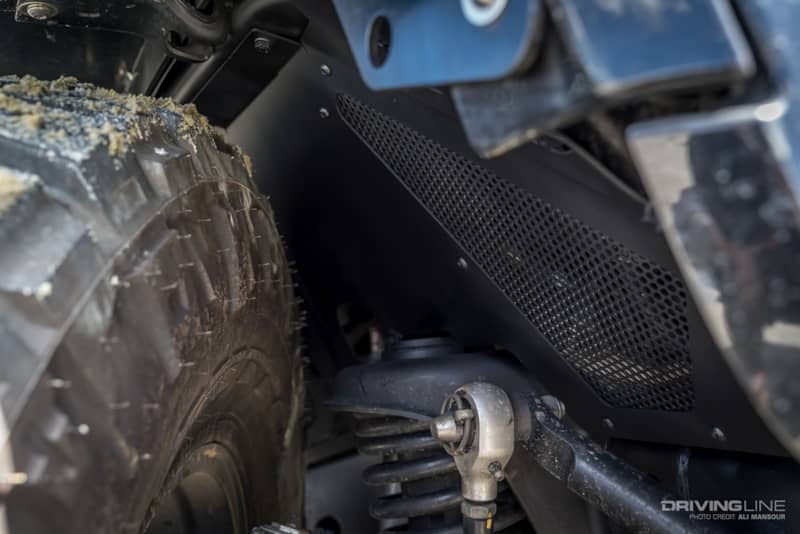
It’s quite impressive just how easily the JK’s wheelwells can envelop a 37-inch-tall tire. While we have plans to move to a beadlock wheel soon, our 37x12.50R17 Nitto Ridge Grapplers are not going anywhere. We’re usually more drawn to the mud-terrain family, but these hybrid treads continue to impresses us on the tarmac and off. It’s been very nice to have a tire that works so well in the dirt, while exhibiting low road noise and the versatility of an all-weather tire.
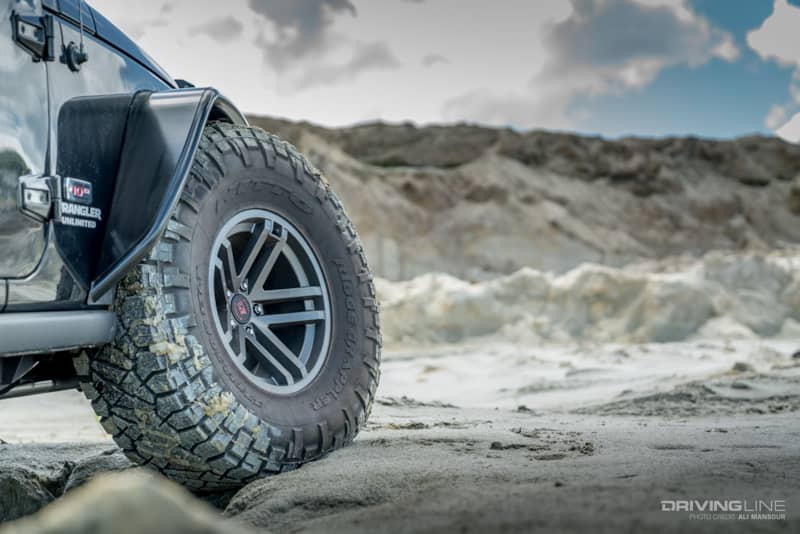
Unlike our EVO fenders at all four corners, the new liners are just for the front. Thankfully, there isn’t much in the back of the wheelwells that needs protecting.
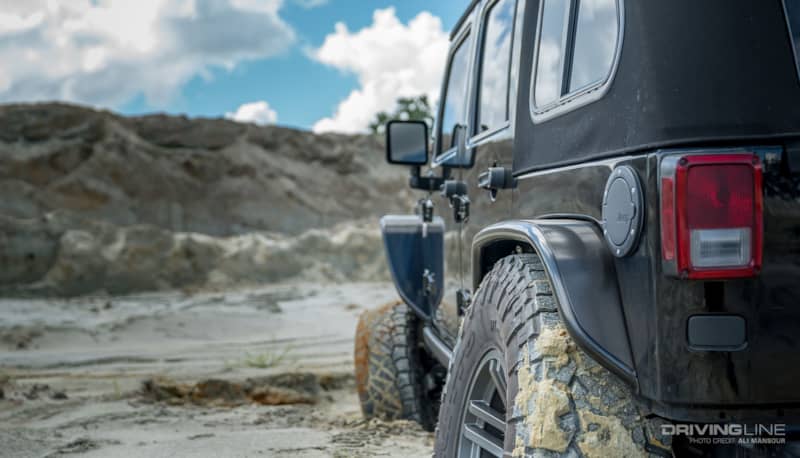
Are They Worth It?
While inner fenders might not be the most exciting upgrade you’ll ever purchase, it is money well spent. Since the EVO liners are vented, we still get the benefit of air flow. However, we’ve now greatly reduced the likelihood of debris finding its way into the engine bay and creating some serious headaches on the trail.
